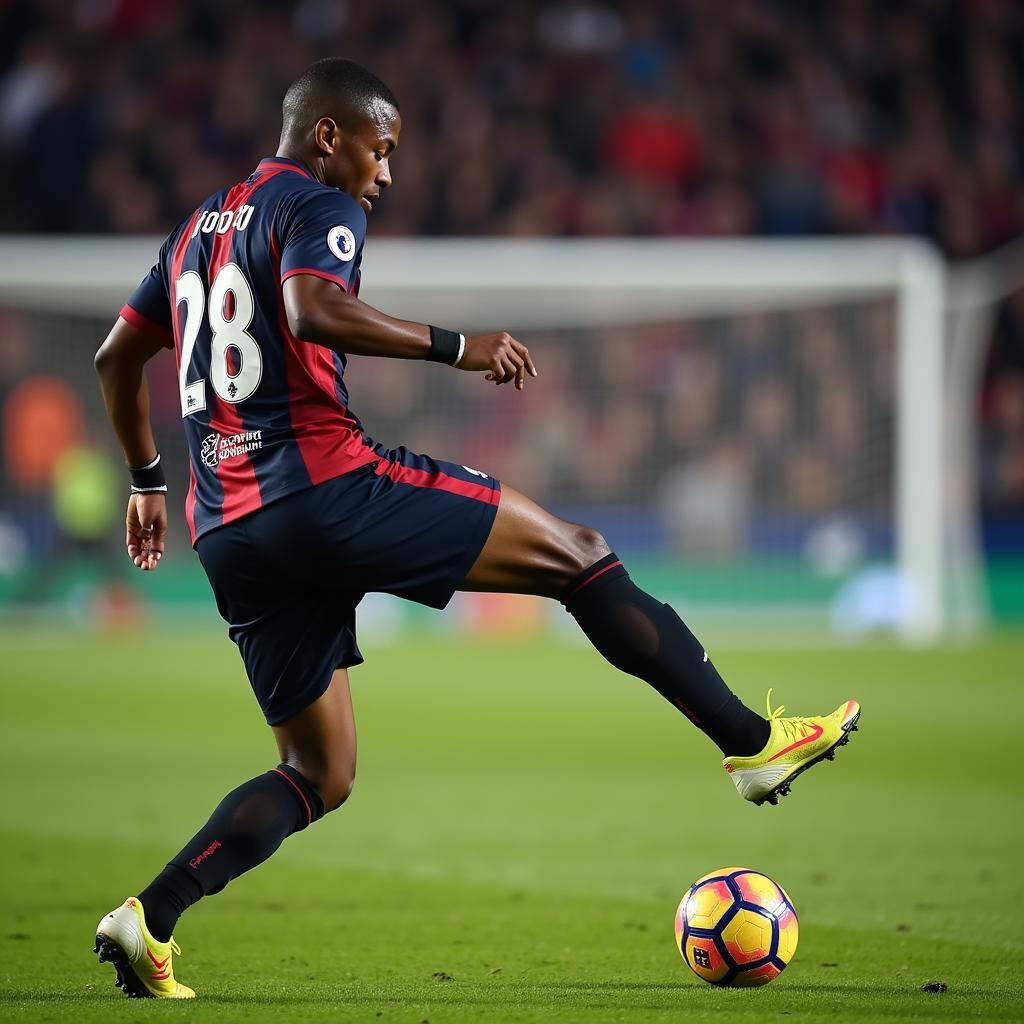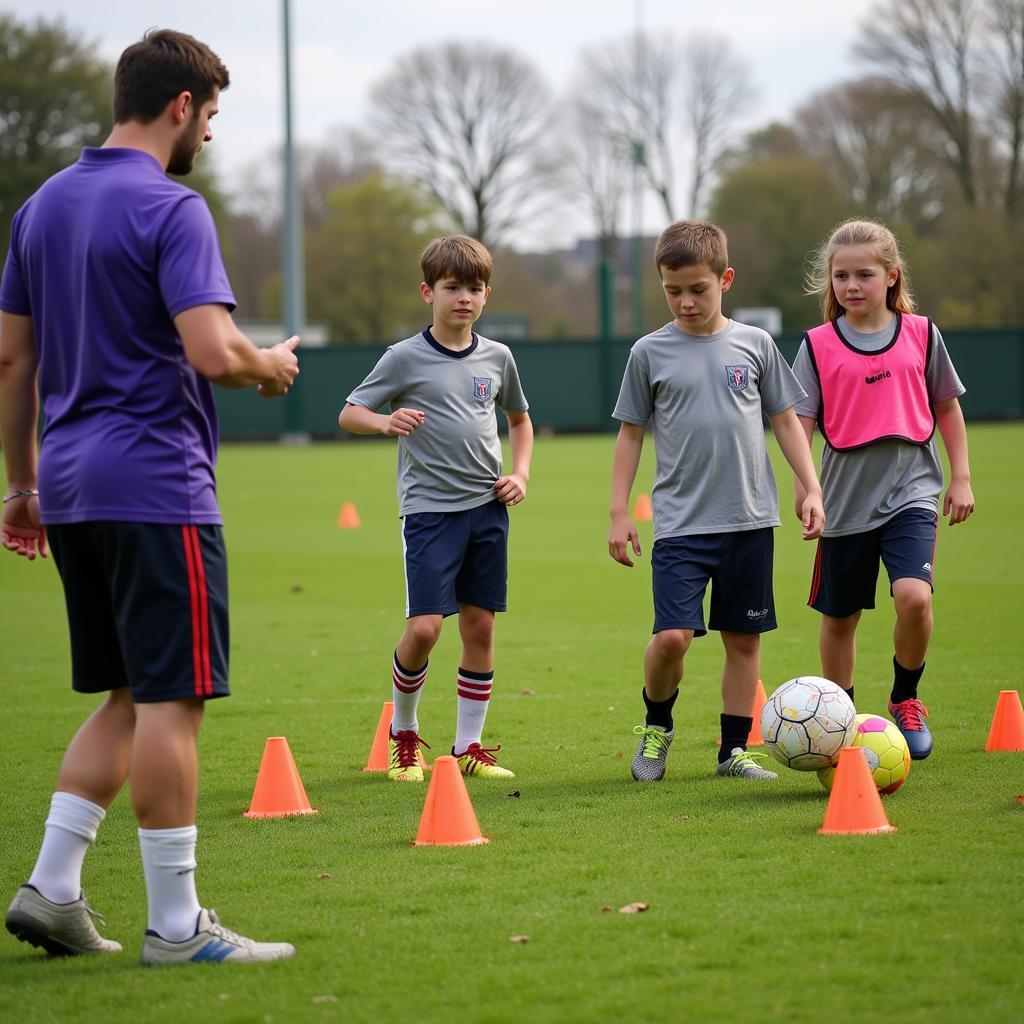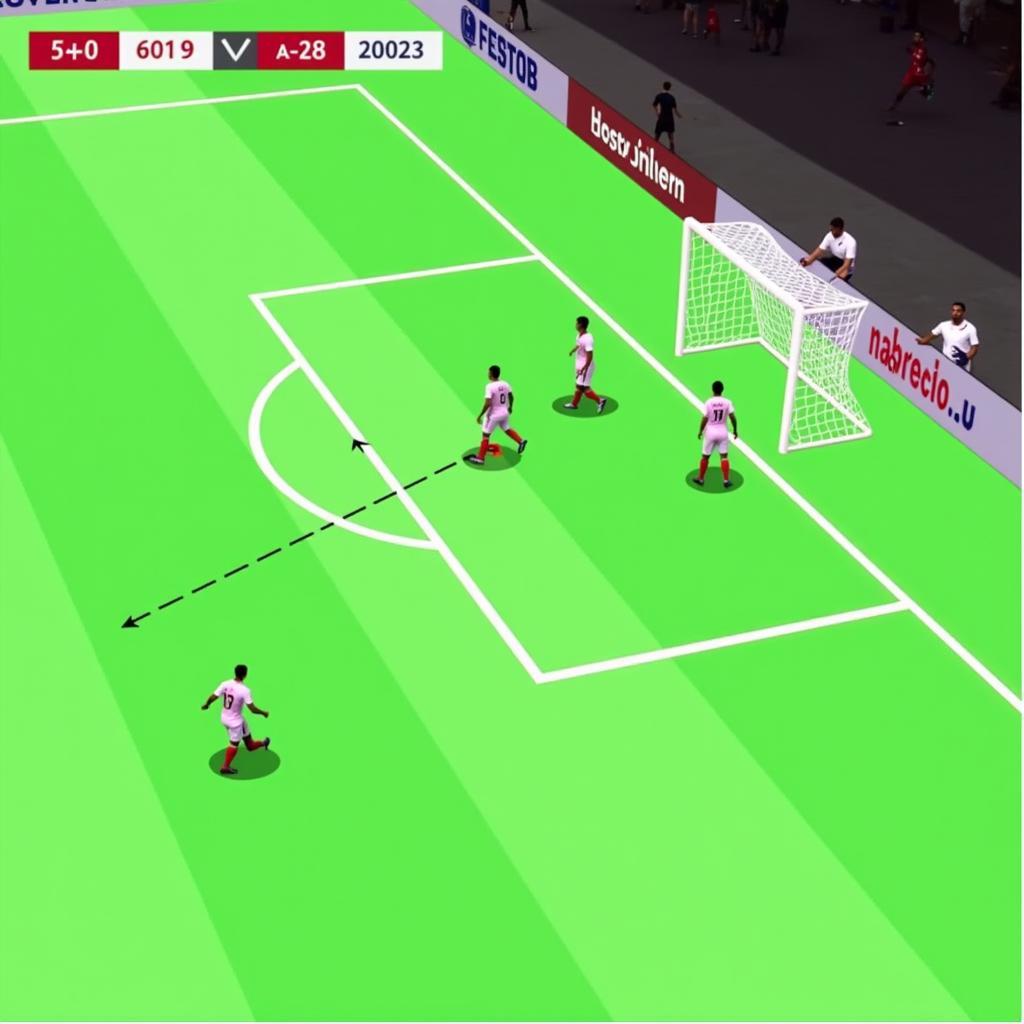One-Footed Player Creates a Buzz: Understanding the Phenomenon
January 18, 2025The phrase “one-footed player” has been making waves recently, sparking discussions among football fans worldwide. What does it truly mean and why has it become such a hot topic? This article delves into the nuances of this intriguing term, exploring its implications and analyzing its impact on the beautiful game.
What Does “One-Footed Player” Really Mean?
The term “one-footed player” typically refers to a footballer who predominantly uses one foot for most actions on the pitch, including shooting, passing, and dribbling. While all players have a stronger foot, a truly “one-footed” player exhibits a noticeable and often limiting reliance on their preferred foot, even in situations where using the other foot would be advantageous. This can become a tactical vulnerability, as opponents can anticipate and exploit this predictable behavior.
 One-footed player taking a shot
One-footed player taking a shot
Why is This Topic Generating so Much Discussion?
The rise of data analytics and tactical analysis in football has amplified the discussion around one-footed players. Advanced metrics can now quantify the extent of a player’s reliance on one foot, highlighting the potential limitations it imposes. This increased scrutiny has led to more nuanced conversations about player development, tactical adaptations, and the overall impact of one-footedness on team performance. For instance, a team with several predominantly right-footed players may struggle to create balanced attacking movements.
The Impact of “One-Footedness” on Player Development
The discussion extends beyond current players and delves into youth development. Is enough being done to encourage ambidexterity in young footballers? Many argue that early training should prioritize developing both feet equally, ensuring players have a wider range of skills and tactical options at their disposal. This focus on balanced development could ultimately lead to more well-rounded and adaptable players in the future.
 Youth football training emphasizing two-footed skills
Youth football training emphasizing two-footed skills
Famous Examples and Counter-Examples
While many players show a preference for one foot, true one-footedness is relatively rare at the elite level. However, certain players have become synonymous with this trait, often being described as predominantly right-footed or left-footed. Conversely, some players have defied expectations and developed remarkable two-footed abilities, demonstrating the value of versatile skillsets. These contrasting examples highlight the spectrum of foot preference in professional football.
Adapting and Overcoming Limitations
Even players who predominantly use one foot can achieve great success by developing compensatory strategies. This might involve positioning themselves strategically to favor their stronger foot, improving their weaker foot through dedicated training, or utilizing other skills like heading or chest control to overcome limitations. Ultimately, it’s about maximizing their strengths and minimizing weaknesses within the context of the team’s overall strategy.
 Player adapting to one-footedness using tactical positioning
Player adapting to one-footedness using tactical positioning
The “One-Footed Player” Debate: Conclusion
The “one-footed player” discussion sheds light on a fascinating aspect of football. While having a stronger foot is natural, over-reliance on it can present challenges. However, with proper training, tactical awareness, and adaptive strategies, even players with a pronounced preference for one foot can excel at the highest level. The ongoing debate highlights the importance of holistic player development, emphasizing the value of ambidexterity and adaptable skillsets in modern football. This complex topic will undoubtedly continue to generate discussion and influence the future of the sport.
FAQ
- What are the disadvantages of being a one-footed player? Predictability and limited tactical options.
- Can a one-footed player still be successful? Yes, with adaptive strategies and tactical awareness.
- How can ambidexterity be encouraged in young players? Through focused training drills and balanced skill development.
- Are there any benefits to being predominantly one-footed? Potentially greater power and precision with the dominant foot.
- Is being one-footed always a negative? Not necessarily, as it depends on the player’s overall skillset and tactical role.
- How do analysts measure a player’s foot preference? Through data analysis tracking shot, pass, and dribble frequency with each foot.
- Can a player improve their weaker foot later in their career? Yes, through dedicated training and practice.
For further assistance, contact us at Phone Number: 0396443476, Email: [email protected] or visit our office at 23 Tháng 3, Đắk Nia, Gia Nghĩa, Đắk Nông, Việt Nam. Our customer service team is available 24/7.